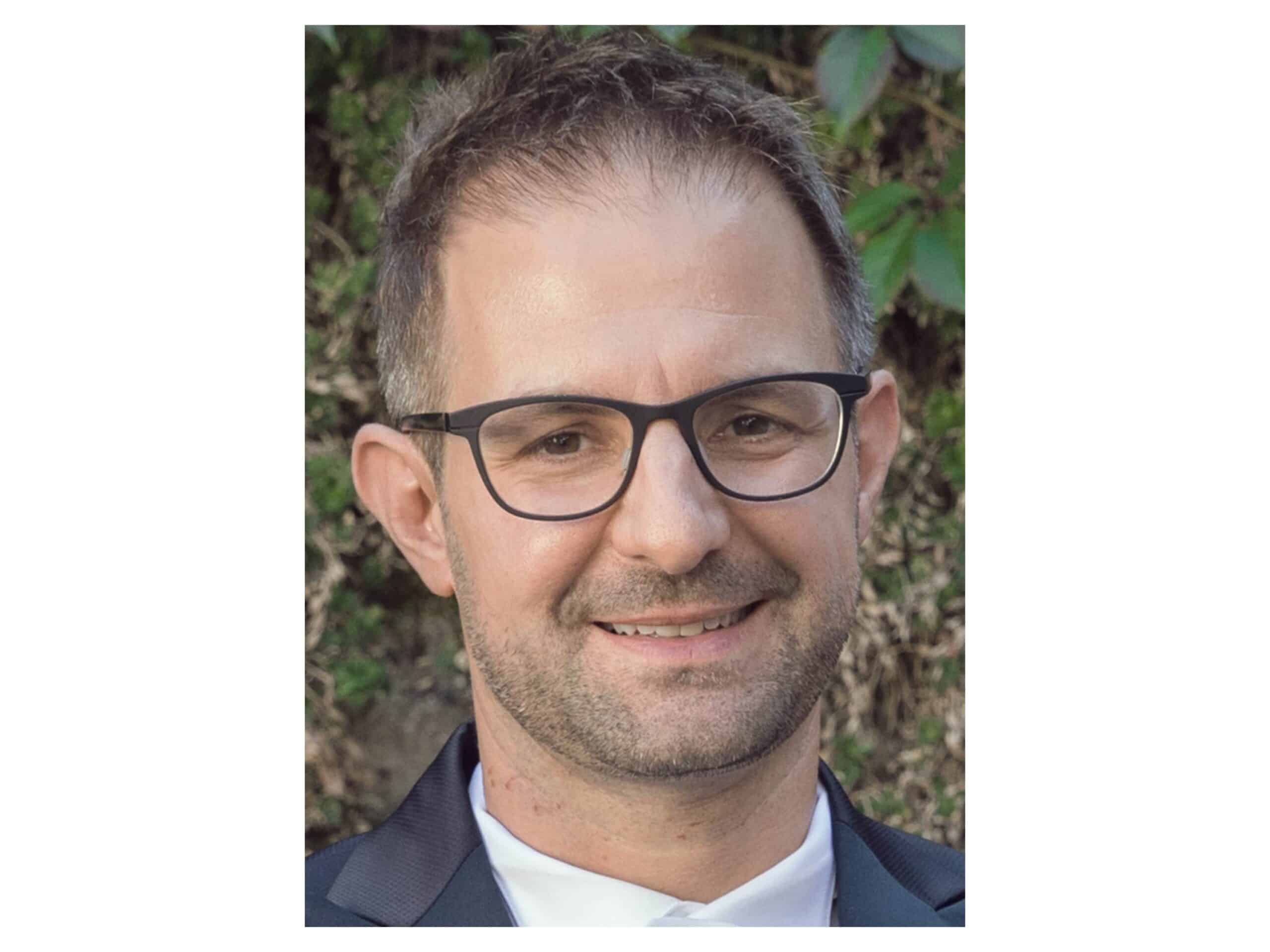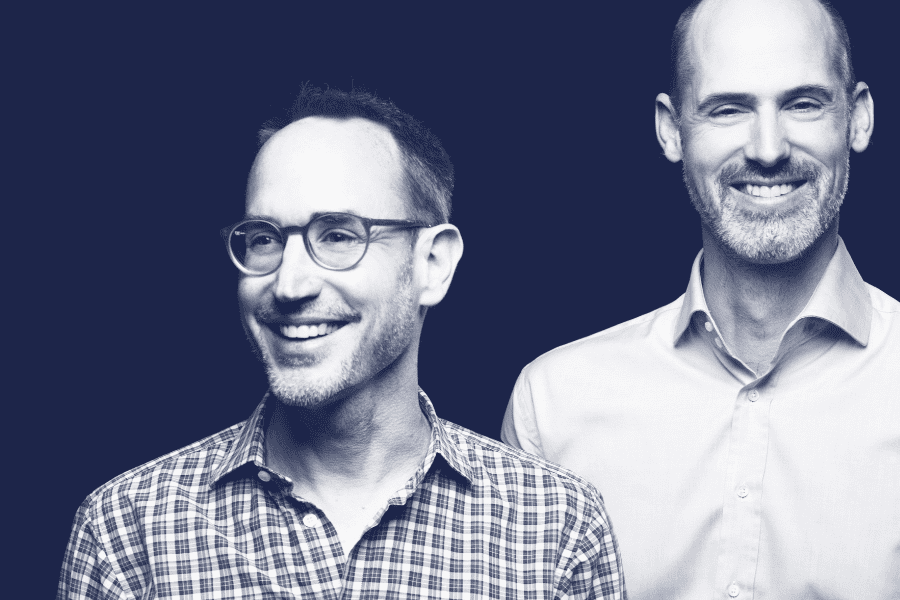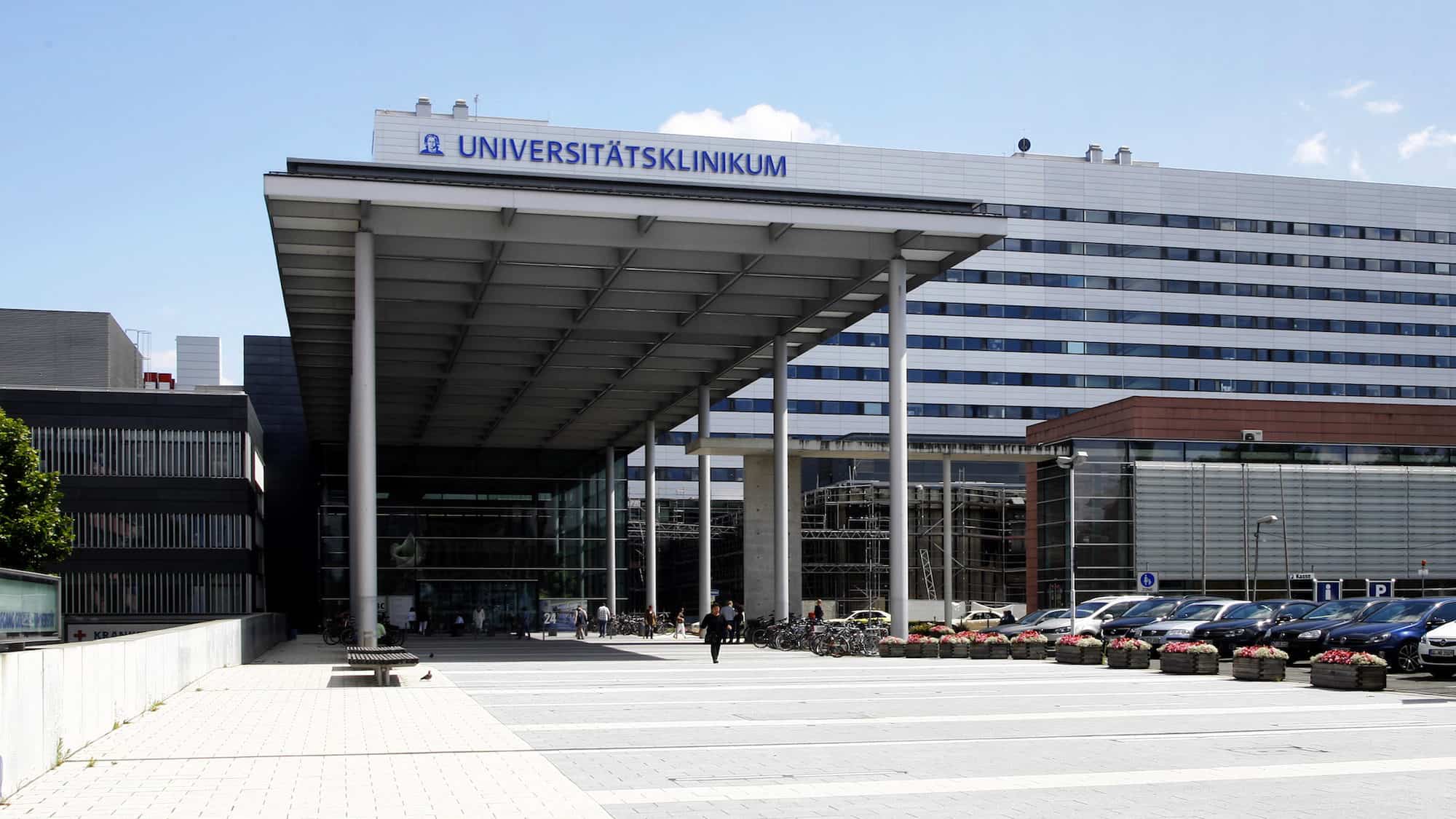A stroke is a serious medical condition that affects the brain of 15 million people each year. Since the 1990s, continuous technological improvement have enabled more lives to be saved year after year. Interventional neuroradiologists (also known as endovascular neurosurgeons) can remove blood clots in the brain and perform other operations in a minimally invasive way by puncturing an artery in the groin or the arm, guided by modern imaging technology. In this interview, endovascular neurosurgeon Pascal Mosimann explains how.

University Institute for Neuroradiology at the Inselspital in Berne.
Pascal Mosimann is a senior physician at the University Institute for Neuroradiology at the Inselspital in Berne.
Endovascular Neurosurgery or interventional neuroradiology is quite a new field in medicine. How do you explain what you do to people?
There is nothing easier than that! I’m a plumber that looks after the blood pipes supplying your brain. If a pipe (brain vessel) is blocked and deprives a part of the brain from oxygen and nutrients, I’m there to re-establish the flow by unblocking it. If a pipe is broken and leaks (intracranial bleeding) I’m there to repair it. Brain arteries are very delicate structures, we’re talking about a few millimeters in diameter here, sometimes even smaller. So you need to maneuver very precisely and delicately. What fascinates me in this field, is this interaction between minimally invasive surgery, engineering and biochemistry. Endovascular neurosurgery is actually quite recent, dating back to the 1980s and 1990s when the first brain aneurysms (fragile outpouchings of cerebral arteries that can rupture and bleed), could be successfully treated without opening the skull. For about 10 years now, technology allows to efficiently reopen clogged brain arteries by removing blood clots, which has had a revolutionary societal impact.
You’ve operated on more than 1500 patients. How does a typical operation look like?
You need to keep in mind that only about half of the operations are planned in advance, the other half are emergencies. There will typically be five or six people in the operating room: the main operator, an assisting physician or nurse, a technician and an anesthesiologist and an assisting nurse, not to mention the team transporting the patient from the emergency department to the cath lab (examination room). A thrombectomy, where we remove a blood clot (typically 5-10 millimeters long), can take anything between 10 minutes to several hours, so on average about 30-45 minutes. Aneurysms are more complicated and take 2 to 3 hours on average because we have to bring more material in place, such as a balloon-catheter and introduce small platinum coils delicately to seal off the aneurysm without re-rupturing the pouch. Both of these interventions are minimally invasive, as we enter the body usually via the femoral artery in the upper leg or arm and make our way along the aorta up to the neck and brain blood vessels by introducing a guidewire and a catheter.
“Time is money”, people say. But apparently, neurosurgeons say that “time is brain”. Why?
If an artery in the brain is blocked, other arteries in the same region will try to take over as long as they can, but the undernourished brain region (so-called penumbra) will become infarcted (dead tissue) if blood flow is not re-established. This is why we’re operating against the clock. With every minute that passes, 2 million neurons die, which is why “time is brain”.
“With every minute that passes, 2 million neurons die.”
In the operating room, you see the arteries of the patient’s brain on a monitor thanks to neuroimaging technology. What are the challenges you encounter while operating?
The further you want to go with your material, the more bifurcations you face and the smaller the caliber of the vessels. This is why we enter with a thin metal wire, the guidewire first. With a plastic tube alone (catheter), it is impossible to navigate through several bifurcations. The challenge isn’t just to go left or right, it is three-dimensional, and especially with older patients, the arteries can be very twisted. To get around difficult corners, I have to take out the guidewire completely. Then I bend the tip with my fingers into an angle that I think will make the passage easier. Depending on how many times I have to do this, and on the pressure I have to apply to shape the metal, the tip can become damaged and another one needs to be used, if not several. And in the meantime, the clock is ticking, not to mention the associated costs.
You’re now working together with the Lausanne-based startup Artiria that develops a next-generation guidewire that makes maneuvering in arteries easier. When did you first meet Artiria’s team?
It was about 4 years ago when I was working with another group from EPFL. I’m very interested in what can be improved in our profession and am looking for ways to operate better, safer and faster. At the time, Guillaume Petit-Pierre (the main founder of Artiria) was working on another technology that was exactly in line with an idea I had had for years to treat cerebral arterial spasms. As we began planning the in-vivo experiments, the concept of engineering a new generation of micro-guidewires also came to life.

Invest in Startups
As one of Europe’s most active venture capital investors, we grant qualified private investors access to top-tier European startups. With investments starting at EUR/CHF 10’000, you can build your own tailored portfolio over time and diversify across stages and sectors.
How much work is left to do?
The pace at which we have been able to advance has amazed us. After in-vitro experiments, the team relentlessly continues to invest an enormous amount of energy in the project. I have been leading the in-vivo trials and giving feedback to improve the prototype Artiria is working on. I am thrilled by the potential and revolutionary technology they are building and amazed by their capacity to adapt to some of the setbacks we faced on the way. They have been very much involved in the in-vivo trials too and have assisted me very effectively, translating my operator needs into technological optimization. There are still some minor adjustments to implement but the current prototype is already extremely impressive.
I imagine that surgeons have their favorite tools and ways to operate. Why would they consider trying out something new?
Because there is currently nothing comparable on the market. Artiria’s guidewire could save a lot of time and money in the operating room because its properties makes it unnecessary to take out the guidewire and re-shape the tip manually. Interventional neuroradiologists and endovascular neurosurgeons are a community that knows each other well. Indeed, most have a strong preference on the materials and instruments they work with. Nonetheless, I’m convinced they would adopt such a new guidewire very quickly, given its features making it easier and faster to operate, not to mention its capacity to navigate better around loops and hairpin turns. From a financial perspective, and given the increasingly centralized hospital stock management, the argument that one guidewire can be used for a multitude of different operations instead of 3 or even 5 devices also offers an appealing way to better control the costs for the administrators and community. And this is only a start. Artiria is also exploring the possibility of another version of the product. This could be turned into a 3D shape suited for removing blood clots directly. This would eliminate the need for a catheter and a stent which are currently used to capture the clot. This would reduce the length and cost of such procedures. Regardless of this possible evolution, I believe that their “swiss army knife”- micro guidewire will be a fantastic innovation that most operators will want to adopt rapidly.
Even with innovative tools, endovascular neurosurgery will still be a manual craft. How does one learn it?
Step by step. We use simulators and silicone models to learn the procedures but the most important aspect is learning by doing in the operating room in order to progressively achieve independence through operative assistance and supervised mentoring by an experienced and qualified senior operator. This typically requires fully dedicated training for at least two years after having obtained your specialist title followed by a formal examination and endorsement by the medical and scientific boards.
What if the arteries are so twisted that you cannot by any means shape the current guidewires so that you can reach the destination?
Then we have to be creative and find another way, which may require much efforts and time. There is an alternative to the minimally invasive way I’ve described, also, which is opening up the skull.
You operate on a very small scale, under time pressure, and have to deal with emergencies where the lives of the patients are on the line. How do you deal with all of this?
In Switzerland, there are around 10 hospitals that do these kinds of highly specialized procedures, mostly university clinics but also cantonal hospitals and one private clinic. The centers need to be accredited and officially certified and re-controlled every 3-5 years to maintain the high quality of care required. At the Inselspital in Berne, we’re a team of 5 operators on-call during off-hours, which means that I’m on call every fifth week. Regardless of how late I operate in the night, I am expected to show up the next day to work again normally, although we support each other so that minimal rest can be guaranteed. Given the commitment and the amount of concentration that is necessary for this job, you really have to be passionate about what you do and this is the case for me. And I can also tell you that after a week of on-call duty, every surgeon is exhausted and needs some rest! That’s why support of friends and family are essential.
Written by
WITH US, YOU CANCO-INVEST IN DEEP TECH STARTUPS

Verve's investor network
With annual investments of EUR 60-70 mio, we belong to the top 10% most active startup investors in Europe. We therefore get you into competitive financing rounds alongside other world-class venture capital funds.
We empower you to build your individual portfolio.
More News
07.07.2020
“I’m bullish about the Swiss startup ecosystem”
Lucian Wagner has two decades of experience as a startup investor. Together with Jacqueline Ruedin Rüsch, he runs Privilège Ventures, a seed and early-stage venture capital firm active in Switzerland and Europe. In this interview, they share the story of how they came to invest in startups and what fascinates them about the Swiss startup ecosystem.
17.06.2019
“There is no good similar treatment”
Prof. Jonel Trebicka is an expert for liver diseases. He is supervising clinical trials of Versantis' new drug to treat an acute form of cirrhosis, which is very difficult to treat.
31.05.2019
“We’re selling actionable information”
PathoQuest’s CEO Jean-François Brepson explains how a new test indirectly helps fight “superbugs” and why he left a big pharma company to lead a startup.
Startups,Innovation andVenture Capital
Sign up to receive our weekly newsletter and learn about investing in technologies that are changing the world.




